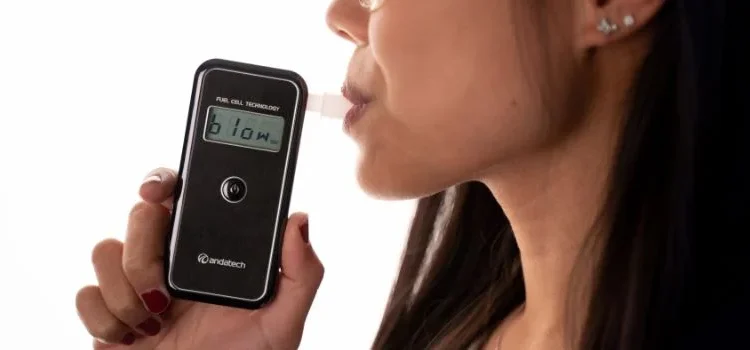Finding the most accurate at-home drug and alcohol testing method is important for many individuals who seek privacy and convenience. These tests are becoming widely used for monitoring personal health or preparing for employment screenings. Different types of tests are available, each with its own pros and cons. Hair drug tests are often considered the most accurate at-home method for detecting substance use. They can detect drug use over a longer period compared to other testing methods. Hair tests can provide insights into use over several months, unlike urine or saliva tests, which reveal recent use.
However, each testing method has its limitations. At-home urine tests are popular because they are easy to use and offer quick results. While they provide a good snapshot of recent drug use, they may not detect substances used several days or weeks earlier. Saliva tests are another alternative, offering a non-invasive way to detect recent drug use, but they share similar drawbacks. No test is perfect; false positives or negatives are possible, impacting the reliability of the results.
At-home alcohol tests, like breathalysers, provide immediate feedback on current intoxication levels. These devices use breath samples to determine blood alcohol concentration. While useful for gauging current sobriety, they cannot reflect past drinking habits. For individuals seeking insight into past alcohol consumption, an alternative method might be needed. The variety of tests offers flexibility, yet understanding each option’s limitations is important for making informed choices.
Types of At-Home Drug and Alcohol Testing Kits
At-home drug and alcohol testing kits offer a convenient way to monitor the presence of substances in the body. These kits come in various forms, each serving different needs and preferences. Understanding the differences among these kits can help individuals choose the most suitable option.
Urine Test Kits
Urine test kits are commonly used due to their ease of use and accuracy. These kits detect the presence of specific drugs by analysing urine samples for metabolites. They often reveal traces of substances consumed within days. Though they provide results quickly, it’s important to use MHRA-registered UK drug and alcohol testing kits for the best accuracy.
Quick results make urine test kits preferable for many people. However, users need to follow instructions carefully to guarantee valid results. Some kits can test for multiple substances at once, offering a broad view of potential drug use. It’s important to note they might not detect substances used very recently due to the time it takes for drugs to metabolise and appear in urine.
Saliva Test Kits
Saliva test kits are a handy choice for detecting recent drug use. They work by collecting a saliva sample, which can easily be done without special training. These kits are often able to identify substances consumed within the last 24 hours.
They are particularly useful for immediate results, like roadside testing or workplace screenings, are needed. Saliva test kits generally detect a narrower range of drugs compared to urine tests. The ease of sample collection and immediate application make them appealing to many. Saliva kits are less invasive, which some users find more comfortable.
Breathalyser Tests
Breathalyser tests are primarily used to measure blood alcohol content by analysing exhaled breath. They provide quick and accurate results, making them ideal for personal and professional use. This type of test is popular for checking alcohol levels before driving or at work.
Breathalysers are typically straightforward to use and offer instant results. Consider using drug and alcohol testing kits that meet certain registration standards for trusted results. While best at detecting current impairment, breathalysers might not reflect long-term alcohol consumption patterns. They are less applicable for detecting drugs other than alcohol.
Hair Follicle Test Kits
Hair follicle test kits offer a long detection window compared to other methods. They can identify drug use over the past 90 days. These tests require a small hair sample and are less prone to contamination or tampering.
Hair testing is effective for evaluating long-term substance use but is less effective at identifying recent consumption. These kits are a good choice for monitoring ongoing drug habits or evaluating substance abuse history. Due to the complex analysis required, results from hair tests take longer to process. It’s also important to guarantee they are government-approved, particularly in settings like custody or employment cases.
Factors Influencing Accuracy
Understanding the different elements that affect the accuracy of at-home drug and alcohol tests is necessary for getting dependable results. Factors such as how the test is handled, the test’s specificity, and the timing of the test after exposure can all play roles in accuracy.
Proper Usage and Handling
The effectiveness of at-home drug tests can be impacted by how they are used and handled. Consistent results depend on careful following of the test instructions. Tests must be stored in the right conditions to prevent damage or changes in sensitivity.
For example, keeping a test beyond its expiry date can decrease accuracy. Users should pay attention to collection methods, such as the correct gathering of samples, which varies by test type. Mistakes in these steps can lead to false negatives or positives. Observing guidelines for handling samples is important for achieving accurate outcomes.
Cross-Reactivity and Substance Specificity
Cross-reactivity in tests happens when a substance reacts unintentionally with other elements in the sample. This can lead to false positives, as seen with over-the-counter medications affecting drug test accuracy.
Tests work by identifying specific drug compounds, but often, other similar substances can interfere. Consumers should be aware of the possible medications or foods that could alter results. Precision in test design helps isolate and identify specific drugs, which improves test accuracy. Understanding cross-reactivity can prevent misinterpretation of results.
Sensitivity and Specificity of the Test
Tests vary in terms of sensitivity, which is the ability to identify users of a substance correctly. High sensitivity helps detect low levels of substances but can also increase false positive rates. Specificity refers to the test’s capability to identify non-users correctly.
A balance between sensitivity and specificity is desirable for consistent results. The tests must distinguish between real drug presence and other factors that may falsely trigger readings. Users should be informed about these aspects to make better decisions about their testing approach. The choice of test might depend on these factors to fit individual requirements.
Timing of the Test Post-Exposure
The timing of the test after drug use can greatly influence its accuracy. Different drugs remain in the system for various lengths of time. For instance, THC from cannabis may stay longer than substances like alcohol.
The body processes each drug differently, so timing affects detection windows. Testing too early or late might miss the drug entirely. Users should consider the typical detection windows for substances they’re testing for. Timing tests strategically helps improve the chances of accurate results when testing at home.
Conclusion
Choosing an accurate at-home drug and alcohol testing method depends on several factors. Urine tests are common due to their cost-effectiveness and ease of use. They can detect many substances and are widely used in home settings.
For newer technology, fingerprint drug tests offer promising accuracy by analysing sweat residues. These tests can detect recent drug use within 24-48 hours, providing results quickly.
Understanding the limitations and capabilities of each method is key. No test is 100% accurate, so it’s important to consider confirming results with a professional test when necessary.













